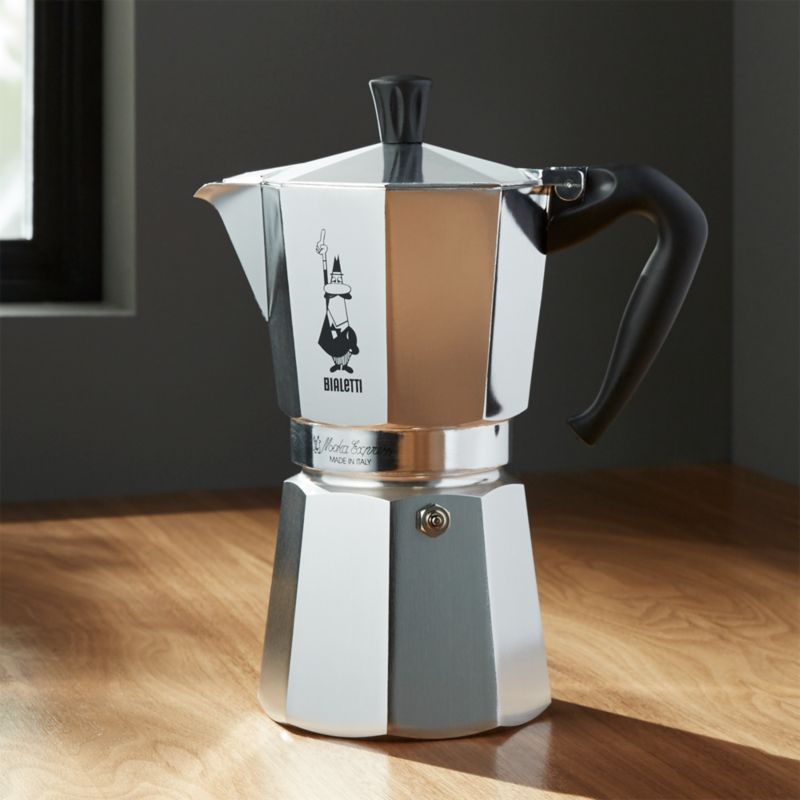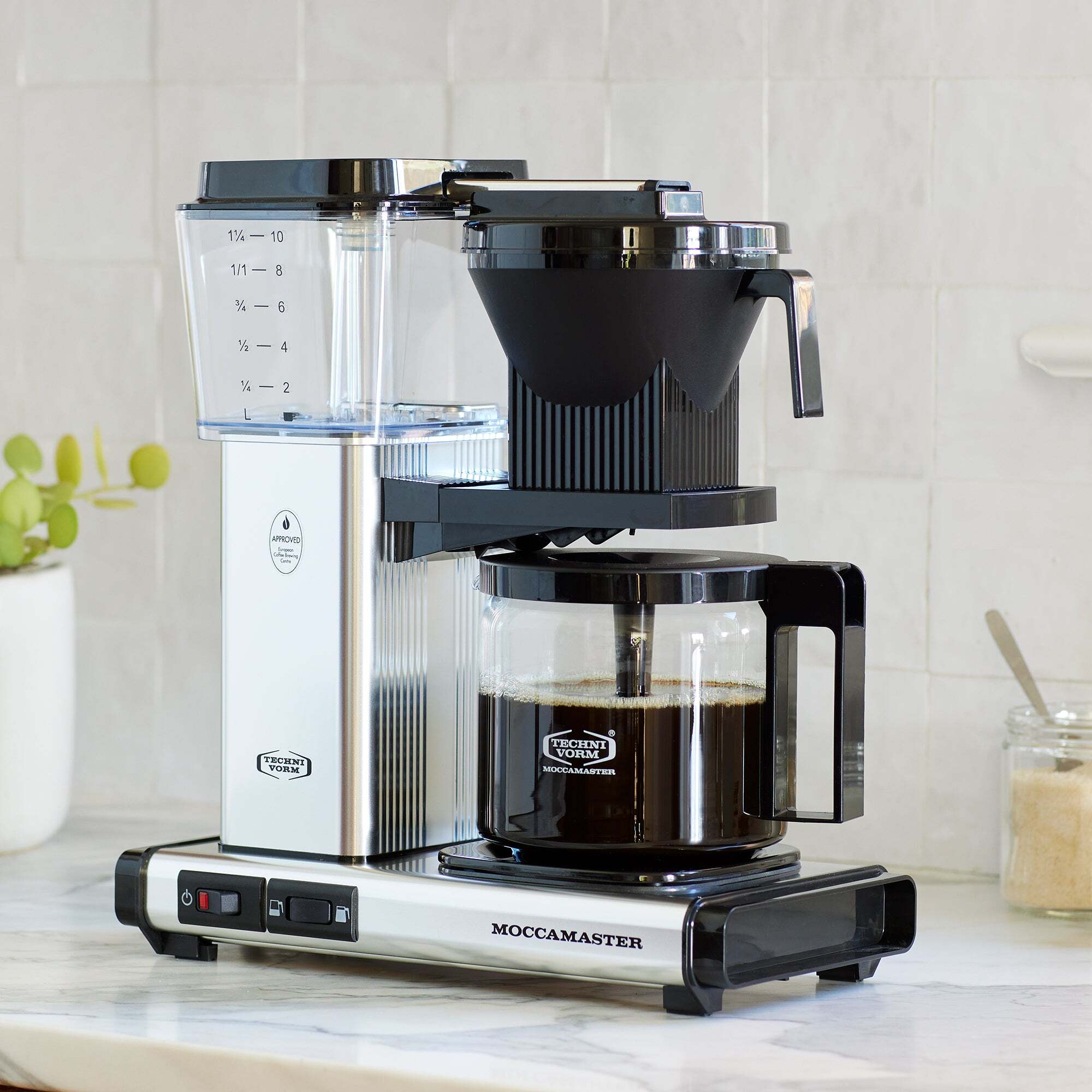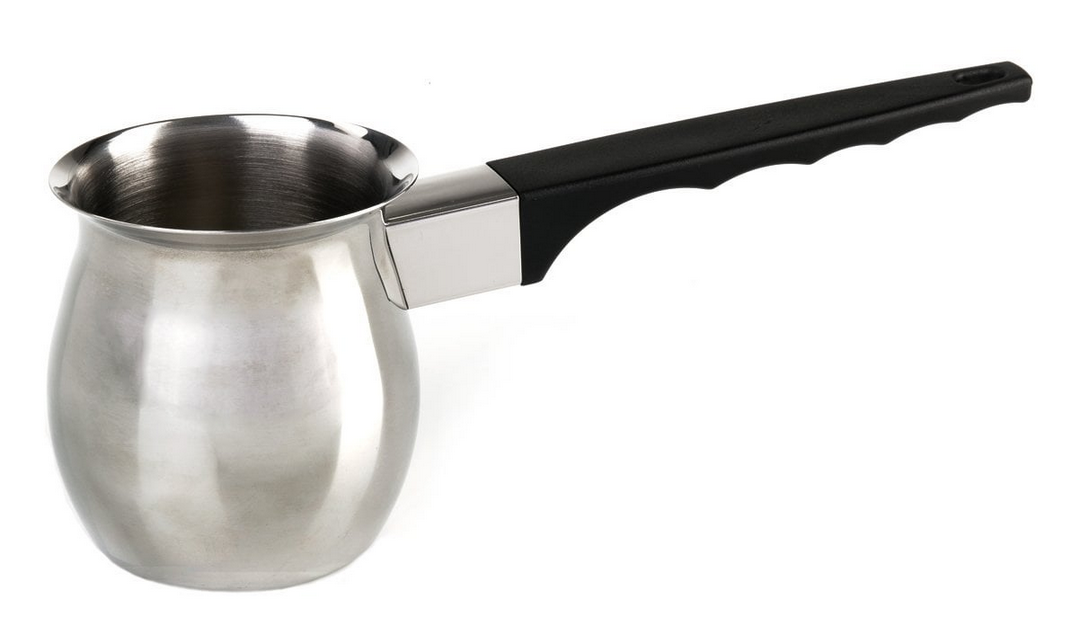- cross-posted to:
- linuxmemes@lemmy.world
- cross-posted to:
- linuxmemes@lemmy.world

Slackware
As simple as Arch, but more stable.
The design is almost 100 years old and doesn’t need daily filter updates.But also it burns the coffee
Only when you use it wrong.
That sounds an awful lot like the blaming the user. Maybe it really is the slackware of coffee.
It’s easy to blame the user when they don’t bother to read the manual or follow basic instructions.
So it burns the coffee.
It does not. A regular percolator does, as it circulates the coffee back into the boiling water, unlike a moka pot, where the finished coffee does not sit at the bottom close to the heat, but in the top compartment. You should take it off the stove as soon as it’s done to avoid getting the finished coffee back to a boil or overextracting the coffee but if you do it right, they make really good coffee. There are even some versions that feature a valve, so the coffee is cooked at a higher pressure, getting it a little closer to espresso and producing a nice –albeit short lived – crema.
Hell, mine made crema on the first try. I probably over-pressed the coffee though.
I really like the mocha pot, but I’m a cappucino fan - if only there were a simple way to steam milk. I even have a Bellman, but it takes forever to build up pressure.
You shouldn’t press the coffee in a moka. Leave it as fluffy as you can
Ye, I didn’t know that when I first tried it. Oops!
Just a happy little accident
Tbh confused how you even managed to burn the coffe with this, as it is just evaporating water that filters through the coffee above - like did you put the coffee in the bottom part? 🤔
I haven’t experienced this, but from what I hear if you start with cooler water in the bottom and have the heat set too high, you can overheat the pot and the grounds before the water comes to temp to actually brew.
The few times I’ve used my moka pot I’ve preheated the water in a kettle so it gets to brewing faster (based on coffee people recommendations online.)
This is the correct way to do it.
Boil the water first, pour it in the bottom, place coffee in section on top, screw on top part, heat till it brews out the too, then remove from heat as soon as it’s done.
I use refrigerated filtered water in mine. Maybe I just don’t set the heat too high though? I use a coil stovetop and put the knob around 7.5/10. Coffee takes 7-8 minutes after I turn it on.
I’ve used a moka pot nearly every day for 10 years, never burned my coffee with it. I’m not even sure how you’d do that unless you just completely ignore it when it’s done and leave it on the stove forever.
I can’t imagine how you burn coffee with a mocha pot.
Like, you’d have to go out of your way and intentionally try to burn coffee with it.
Me too. And a lot of chatter (how are people managing to burn the coffee!?). Classic. Stable. Easy to maintain. Need to take care to get the best results.
Do these work ok on a glass top stove?
Yes. Although I recommend getting the stainless steel version. It can work on anything even an induction hob. It’s the one I take travelling.
Yes
Aeropress gang representing.
I run debbie kde plasma x11 btwAeropress gang, but running mint.
Same. “Works pretty well out of the box but I have the option to fuck it up”
That’s the best description I’ve heard in a while. Also, the user interface hasn’t changed in a decade.
Samesies
I was gonna say, how do you know an aeropress/nixos user - they’ll tell you. But Debian works too 😂
Aeropress and Fedora! Apparently I should use Chemex instead
Aeropress and PopOs
So what’s a cup of instant equivalent? Don’t tell me it’s Windows.
ChromeOS? lol
Mac os. Windows wouldn’t be coffee at all
Nah, the macOS equivalent would be going to starbucks
Overpriced and mid? Yup, checks out
that’s good postum!
WSL2
I just need to run this script and I need it fast
Windows is Monster. Will give you your caffeine fix, does what is supposed to do, but will slowly destroy your body.

Linux Mint (Moccamaster) it just chugs along and makes the best coffee possible. Fast and reliable.
$400 for a drip machine?
Must be a Mac user.
270€ on Amazon here, but you sure got a chuckle out of me 😁
1 litre of delicious coffee in 5 minutes is hard to beat though.
Its not a drip machine though, it’s more like a Chemex that doesn’t require you to do the pouring.
Moccamaster is a drip machine. Not that there’s anything wrong with that, Moccamaster makes good coffee.
I know some hate this but pour over, this chemex thing and Moccamaster, it’s all drip coffee lol. Drip coffee just has a bad and cheap reputation so most avoid using those terms.
It does make good drip coffee though. But best drip coffee imo comes from pour-over, but that can be less convenient and consistent than an automatic machine.
Moccamaster<3
I use debian btw
The analogy works well since its Debian-like, but way more awesome. The Moccamaster is great. As easy to use as a drip, but makes better coffee than the Chemex.
Why is this so accurate (even though I’ve tried many other distros and coffee makers)
I use this:

Except my stove top is electric.
I use LinuxMint by the way.
That’s just pretentious, man. You do that for the musafir but there’s no way you use that impossible to clean cezve on a daily basis.
Here, use this:

A teaspoon for every little cup of water. Heat it fast until it simmers, stir like crazy for two minutes, pour, then let it froth slightly, then pour again.
I use Arch and Debian depending on what I think is easiest.
deleted by creator
Thank goodness poor openSUSE got some coffee here
القهوة العربية مع الهيل؟
That’s the best.
I prefer mine with chocolate actually, but I do like Arabic coffee with cardamom.
NixOS would be like brewing coffee with laboratory equipment and then setting it up for automation.
Well, dammit, now I gotta go try NixOS. Gee, thanks for sending me down the rabbit hole, like I have time for yet another one!
The device you’re looking for is called a coffee syphon. Like this one from hario https://www.hario-canada.ca/products/hario-syphon-tca-2
…in a container
I do French Press, where does that put me?
PopOS
I feel like with french press being all manual PopOS isn’t the right fit.
I think in this graphic I would replace the Fedora pour-over thing with a French Press because they already did pour-over with Arch.
And then Android is a Starbucks cup.
That fits. Just like Android, Starbucks coffee is well made, by someone who isn’t you.
The quality of the final product is still in question though.
Starbucks coffee is consistently made, not well-made. Their roasting is just off, and it adversely affects the flavor of the coffee.
Oh, I’m specifically saying that the workers do a good job of assembling all the parts to make your coffee.
So I think we’re saying the same thing with different terms.
To be fair, I think your wording is more clear.
made, by someone who isn’t you, who works for a large and terrible corporation doing god knows what harm around the world.
The pour-over thing is called Chemex just FYI. It’s supposed to be different than regular pour-over. I use Fedora…
How is it different other than going into a temporary container before going into the cup?
And then Android is a Starbucks cup.
That does Android a huge disservice. Android is a well made Nescafe. It’s not the coffee of your choice, but it is stable and reliable, and doesn’t make a fuss if you pour other coffees into it.
You might argue that the dairy and sugar dessert beverages served at Starbucks often don’t count as real coffee, much the way Android has very little in common with the rest of the Linux ecosystem. It technically has Linux/coffee in it.
I’m French Press and I use Fedora.
Fedora would be a French Press.
Reliable, consistent, hard to screw up, broad information online on how to use one.
That’s what I use, it’s so much simpler. And I only use the press because my wife refuses to buy me instant coffee, otherwise that’s what I’d drink, cause it’s so about ease for me. A press is easier to clean
Beware the diterpenes
I prepare my coffee in a cup, and drink it with grounds. No milk, no sugar.
I am an embedded developer.
Sometimes when I’m too lazy to boil water, I leave coffee grounds with cold water in a cup overnight, the coffee is strong enough in the morning, and no need to wait for it to cool.
You’ve discovered cold brew!
I never have time for waiting for the kettle to boil so I do this on the daily.
Very happy to see myself correctly represented. I use a single cup pourover, BTW
Me, a Slackware user: eating raw coffee beans by themselves
Excuse me but I’m a Debian user and I’m not using the same system since 10 years.
More like 30 years.
deleted by creator
My wife is an arch user… Oh no.
I use a french press and endeavouros. don’t know what that says…
It says there are at least two of us!
Three now!
I use Fedora and sometimes Debian (Debian is love! 🌀❤️), and brew my coffee in a moka pot.

















